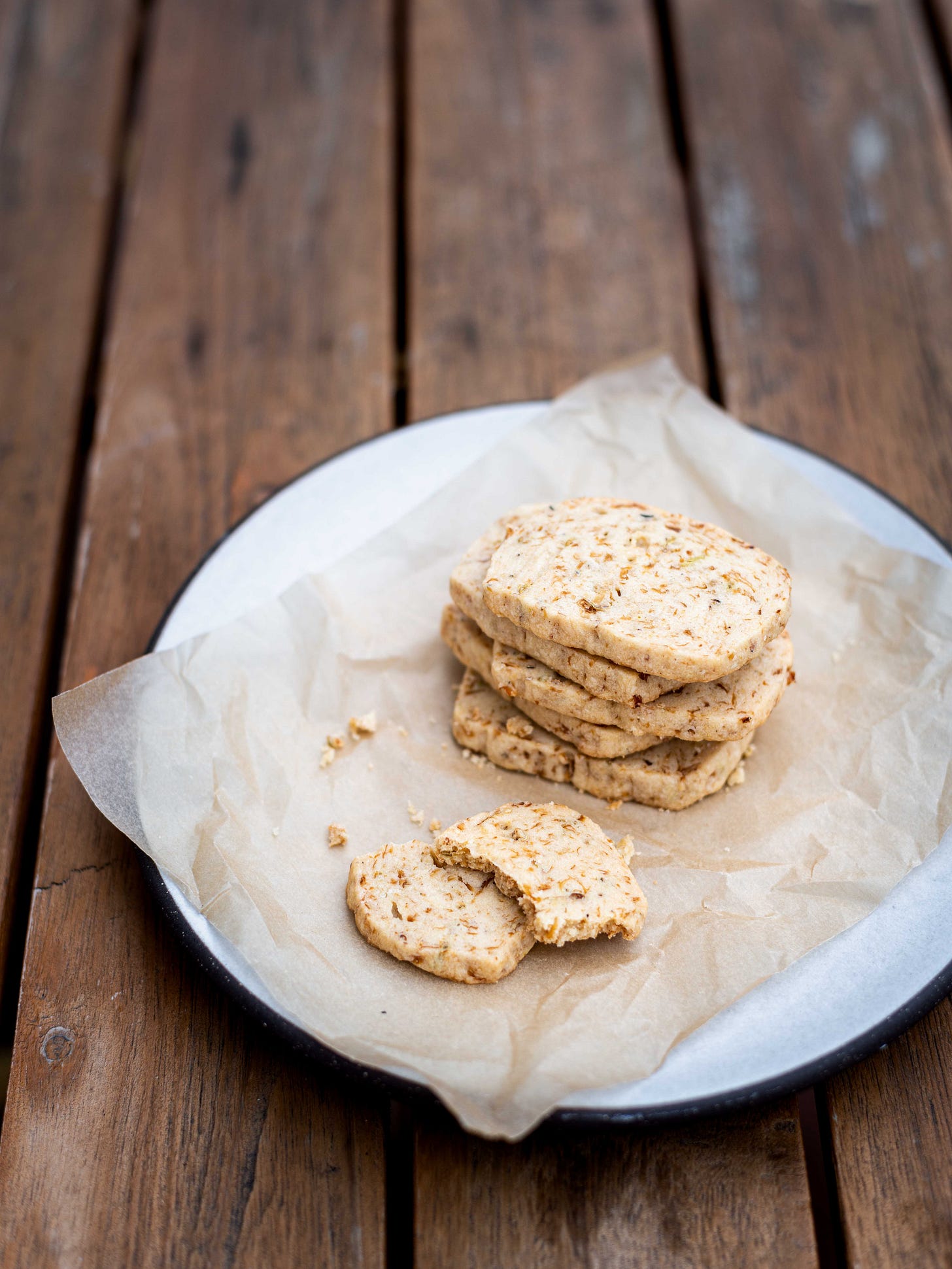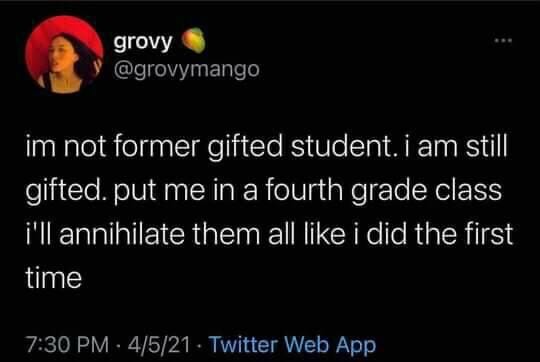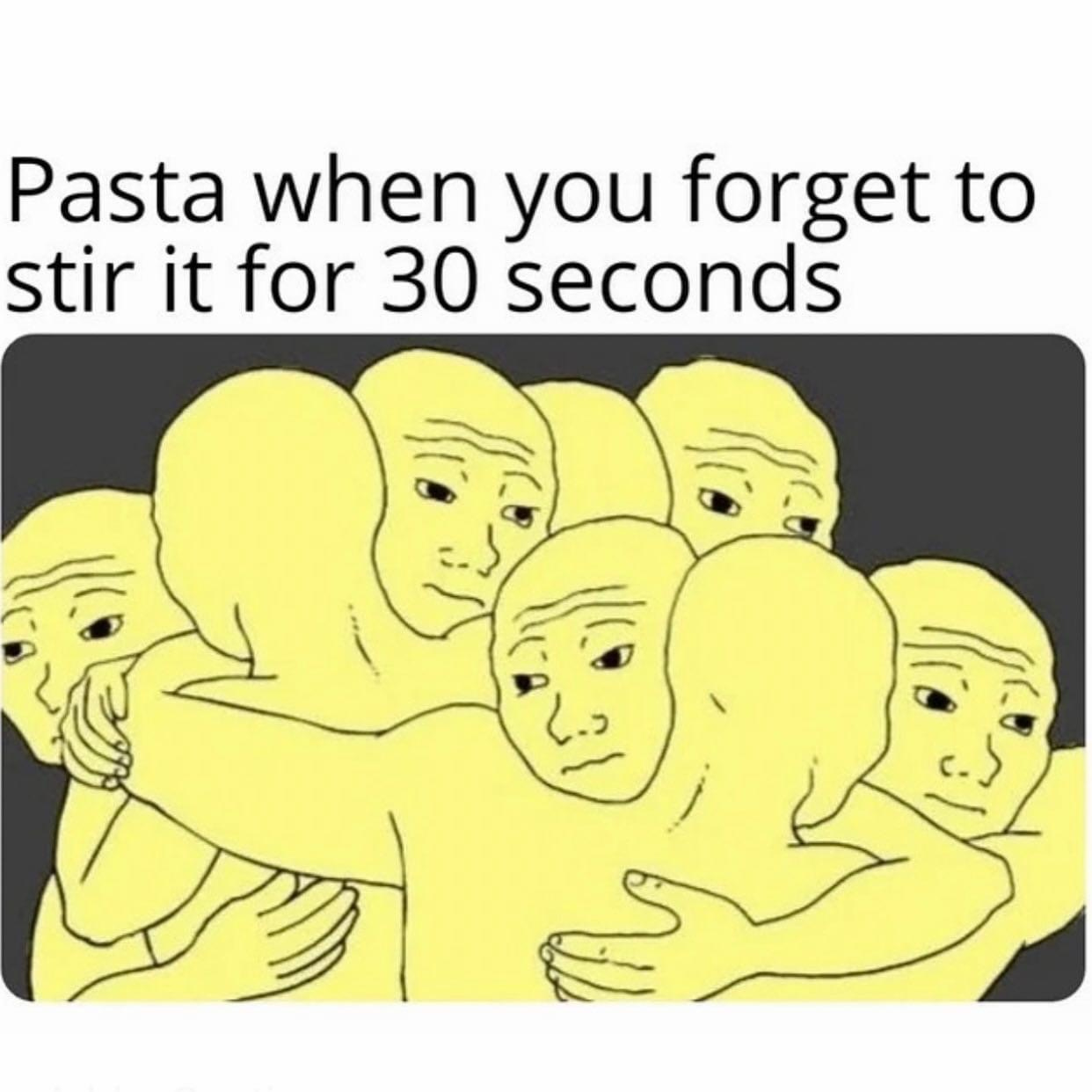Recipe: Cabbage Cookies from Avatar the Last Airbender
Plus, how to make real food from a fictional universe
Today, a special offering thanks to Milk Street and my publisher, Insight Editions. I recently hosted an Avatar the Last Airbender cooking class for Milk Street, where I discussed the real-world logic — and implications — of creating food from/for a fictional universe. The video recording of the whole class is available under the paywall, but don’t worry if you’re not able or not interested in paying for the newsletter right now — the recipe for one of the most popular recipes from the book, Cabbage Cookies, is available for all below.
What the heck is Avatar the Last Airbender?
If you’re not familiar with ATLA, it is a cartoon series from Nickelodeon that aired between 2005-2008 (with a sequel, Legend of Korra, that ran 2012-2014). While its basic narrative arc isn’t too dissimilar from other Young Adult (YA) books, shows, or films, ATLA has a special place in many people’s hearts (including mine) because of its strong, thoughtful character development and exploration of complicated themes like:
Sibling rivalry and the toxic side of “family honor”
Generation divides and the realities of war
Mental manipulation and grooming
Found family vs. blood family
Coming-of-age insecurity, especially when exacerbated by jealousy and envy
Fear of failure and life in the public eye
Notably, ATLA gave richness to the backstory of its so-called villains. Even if many of us likely didn’t have the vocabulary to describe it then, characters like Zuko and Mai really did personify the idea that everyone is doing the best they can with what they have. Their redemption arcs were delightfully messy and full of missteps, which is precisely what made them feel so believable and worthwhile. It does not appear “literary cartoon” exists/is being used, but just as literary fiction brings us so much more than just a plot, ATLA really is worth a stream — even for adults.
While ATLA still ultimately fell prey to certain tropes — namely the “one main hero,” although that concept is later cross-examined in Korra — and unfortunately relied on an almost all-white cast of voice actors, it created a fabric by which then-teens and tweens could weave in their own chaotic realities. Drawing back to my past piece about fandom, it’s really no surprise than ATLA fanfiction commands a whopping 33,361 pieces on Archive of Our Own. (It also had a very active Wikipedia, on which I was startled to find myself occupying a page!)
So why does all of this matter? As I wrote in a past Instagram post,
Although YA stories like ATLA are set in fictional worlds with fictional characters, the treatment of their personalities and plotlines have real world consequences. As consumers, we learn to normalize, accept, even replicate, the behavior we read and watch.
One example I still recall vividly is from Harry Potter, when Ron berates and humiliates Hermione because he’s jealous. What message do young readers absorb, then, when they end up a pair in the end?
Similarly, what is the message sent to young readers with marginalized identities when fictional reflections of themselves only exist as afterthoughts, caught between stereotype and trope? (I mean, Cho Chang?) This is not some relic of the past — the hero in the 2018 movie adaption of Maze Runner, a white boy named Thomas just so “happens” to have blood so powerful it cures the disease killing humankind. As he saves humanity by simply existing, his girlfriend and non-white sidekicks die off.
Some notes on bridging fiction and real food
I signed my contract with Insight in mid-2020, and quickly began a fond journey down memory lane rewatching every single episode of ATLA and Korra. Seeing how much thought the showrunners put into small details, compiling an appropriately representative roster of dishes challenged me to rethink my approach to recipe ideation — especially for dishes based on cultures I am unfamiliar with like Inuit and Yupik, knowing there are larger implications than just “sea prune soup.”
For example, if I know that egg tarts (Avatar Aang’s favorite dessert) must be in the book, what style of crust should it be (puff pastry or shortbread), and why? What’s the narrative behind the kale cookies that are eaten in Korra, when it clearly requires ingredients like white flour that has a violent history with Indigenous populations? What dishes should I insert from the Si Wong Desert, clearly modeled after the Gobi Desert, especially with a fictional tribe (Hami) that matches the name of an area in the Xinjiang Autonomous Region during this time of government-sponsored terror?
I wrestled a lot with these desires, and tried my best to realize them within the constraints of time, money, resources, and “mass appeal.” I only could test things two, maybe three times maximum, and that was pretty anxiety-provoking. (I’ll just…leave it at that since I have signed an NDA.) In the end, I gravitated towards three major guiding principles:
1.Acknowledging, in some form, the real impact of geopolitical changes in a fictional universe as to mirror our own. For example, Aang mentions the bleak reality of having no ancestral tree and only memories by which to build recipes due to the Air Nomad Genocide; there’s a clear delineation of when trade routes open up more freely into the Water Tribes after the Hundred Year War, and recipes that come both before and after. The main narrative arc for that section is from Katara, who finds herself caught between enthusiasm for change and worry about lasting cultural shifts. An excerpt:
Nowadays, so many more ingredients are coming from the Earth Kingdom and Fire Nation. These are good, perhaps necessary, developments, but sometimes I have expressed concern to the Council that the delicate cuisine of the Water Tribes might fade.
2. Proper relegation of ingredients and dishes to corresponding cuisines, cultures, and geographic regions. When I first put out calls for recipe suggestions on IG, many wrote to me how important it would be to them to see revolution-sparking tsampa within the Air Nomad repertoire, so I fought for that to be included. In the Fire Nation, pairing strawberry and mochi together (albeit in a very different form) for Fire Gummies was a nod to Japanese wagashi. Uncle Iroh’s tea shop, the Jasmine Dragon, also has specific tea callouts to geography — like oolong tea “from the Southern islands” with a recipe note for Taiwanese oolong from Dong Ding. (To avoid misinterpretation, that is in no way meant to allude that Taiwan is part of China.)
Making sure that the ingredients for the Water Nation were appropriate, especially before the end of the War, was particularly difficult. Substitutions, the bane of my life, were necessary for common culinary fats like seal blubber, or fictional things like sea prunes. I found myself down a lot of rabbit holes looking up growing climate preferences for random types of plants (“what could feasibly grow here, even if it doesn’t currently?”) and ended up with what I hope were acceptable substitutions — like lard (another saturated animal fat) and morel mushrooms (for sea prunes, as they look similar-ish, and mushrooms do grow in the Arctic, even if it’s not that specific variety).
3. Finding opportunities for world-building (within reason). ATLA may be over, but clearly its fans wanted to know additional nuances, character motivations, and perspectives. Much like Katara above, I wanted to find ways to interject bits of character detail where I could (and amazingly, Nickelodeon did review and approve what is in the book now). A favorite anecdote of mine from the book is the recipe for Ember Island ice cream, which is flavored with cherry and a hated treat of Azula’s — much to Mai’s delight. (IYKYK)
Okay, so, the cabbage cookies
On that note of world building, let’s talk about the cabbage merchant. He’s one of the most-loved minor characters in ATLA, always available for some comedic relief. Despite the constant disruptions he faces in selling cabbages because of Team Avatar, he always seems to pick up where he left off and reappear again, many episodes later, alive and kicking.
In the cookbook, I dedicated three different recipes to him because I wanted to show that this local cabbage enthusiast wasn’t just someone who sold cabbage, but a well-traveled, storied merchant of his own right. Selfishly for me, he also provided an excellent backdrop to bring in flavor inspirations from wider regions across China (which the Earth Nation is clearly modeled after).
The cabbage cookies in question, I imagined, were from his trip down south (aka to British-occupied Hong Kong). There, he would’ve encountered ingredients like butter, shortbreads, and high tea service. It’s one of the few recipes in the book that are made in a more western-style dessert fashion. Not to toot my own horn, but these are really good. You ever do a thing that makes you think, wow, I guess I am actually an expert at what I do? This recipe would be one of those moments for me. I hope you love them, and they do the cabbage merchant justice.
The Cabbage Merchant’s Famous Cabbage Cookies
Yield: 20-25 cookies that are ~3” in diameter
For the cookie mix-ins
2 Tbsp neutral oil
1 head green cabbage, cored, roughly chopped (575g)
2 tsp kosher salt
1 tsp white sugar
2 tsp whole fennel seeds
2 tsp whole coriander seeds
Heat oil in a large skillet over high heat until slick and shiny.
Add cabbage with salt and sugar. Sauté until cabbage has reduced considerably in size, given up all its moisture, is translucent and deeply charred at edges, approximately 15-20 minutes.
Transfer cabbage to food processor, and pulse until finely chopped. Reserve.
Dry toast spices in a clean skillet on low heat until lightly browned and very fragrant, approximately 3 minutes.
Let cool to room temperature.
Transfer to a spice grinder, and grind coarsely. Reserve.
For the cookies
1 cup unsalted butter, shortening, margarine, or vegan butter, at room temperature
¼ cup white sugar (50g)
1 tsp kosher salt | Note: I use Morton’s Coarse
Toasted spices, from above
1 cup pulsed cabbage, from above (200g)
2 cups all-purpose flour (270g) | Note: I use King Arthur Flour
1 tsp baking powder
Cream butter and sugar in a stand mixer with a paddle attachment until fluffy, approximately 3 minutes.
Add salt and spices.
Add cabbage, and continue to mix until well combined, scraping the edges when necessary.
Add flour in small increments, and continue to mix until well combined.
Transfer half of cookie dough onto one sheet of parchment paper (sized for a half-sheet tray), and roll carefully to form a log. Repeat with second half of dough.
Freeze ~45 minutes to an hour, or until firm enough to be sliced.
Preheat oven to 350F.
Remove cookie dough from freezer, and slice into ¼” thick cookies. Note: If your cookie dough is now too hard from the freezer, just let it thaw a bit in the refrigerator.
Place cookies on a parchment-lined sheet tray and bake until golden brown, approximately 10-15 minutes.
Remove from oven and let cool. Serve warm or at room temperature.
Finished cookies can be stored in airtight containers for up to 3 days, or frozen for up to 3 months. Reheat, if desired, using the oven.
The full video tutorial is under the paywall, alongside a tutorial for Sea Prune soup. In the meantime, please have some memes.
Weekly Meme Roundup
Personal Things From The Last Few Weeks
Listening to: Lewis Capaldi
Watching: I started Bridgerton season one, but am having a tough time getting properly “into” it
Reading: Time is a Mother by Ocean Vuong
Eating: I just kicked off some chamber vacuum testing for Anova, so a lot of compressed and infused fruit
Drinking: All the sparkling from J Vineyards
Nice thing I did for myself: Took some breaks from my intermittent fasting routine when I simply needed to eat dinner a little later than 8pm, and did not feel guilty about it.
Keep reading with a 7-day free trial
Subscribe to Way Too Complicated to keep reading this post and get 7 days of free access to the full post archives.







